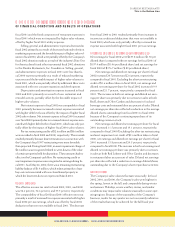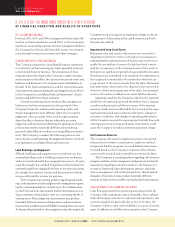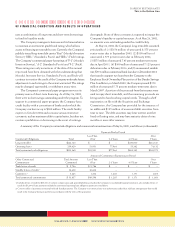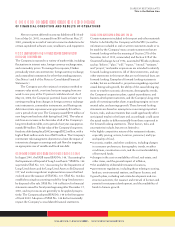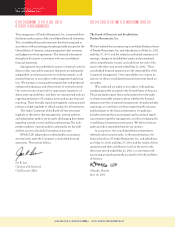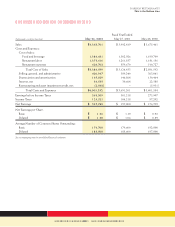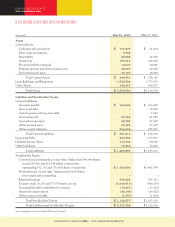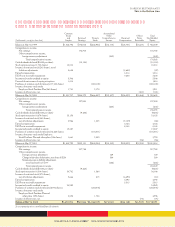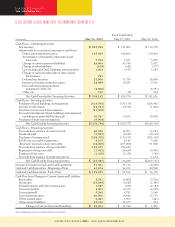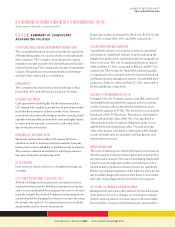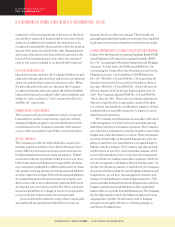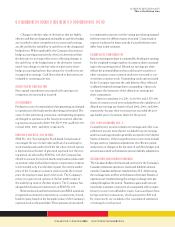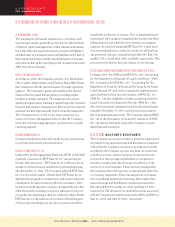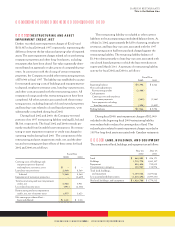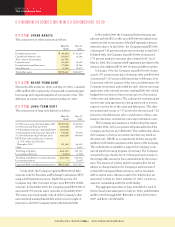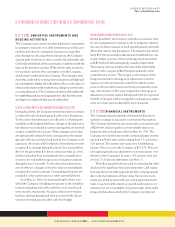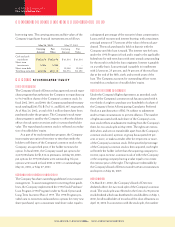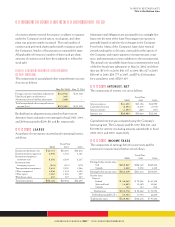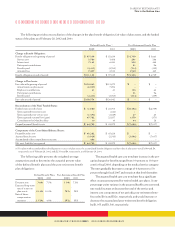Red Lobster 2002 Annual Report Download - page 32
Download and view the complete annual report
Please find page 32 of the 2002 Red Lobster annual report below. You can navigate through the pages in the report by either clicking on the pages listed below, or by using the keyword search tool below to find specific information within the annual report.
DARDEN RESTAURANTS
This is the Bottom Line
NOTE 1 SUMMARY OF SIGNIFICANT
ACCOUNTING POLICIES
Operations and Principles of Consolidation
The consolidated financial statements include the operations
of Darden Restaurants, Inc. and its wholly owned subsidiaries
(the Company). The Company owns and operates various
restaurant concepts located in the United States and Canada
with no franchising. The Company also licenses 33 restaurants
in Japan. All significant intercompany balances and transac-
tions have been eliminated in consolidation.
Fiscal Year
The Company’s fiscal year ends on the last Sunday in May.
Fiscal 2002, 2001, and 2000 each consisted of 52 weeks.
Cash Equivalents
Cash equivalents include highly liquid investments such as
U.S. treasury bills, taxable municipal bonds, and money market
funds that have a maturity of three months or less. Amounts
receivable from credit card companies are also considered cash
equivalents because they are both short-term and highly liquid
in nature and are typically converted to cash within three
days of the sales transaction.
Short-Term Investments
Short-term investments include a U.S. treasury bill that is
classified as a held-to-maturity security because the Company
has the positive intent and ability to hold the security to maturity.
The security is valued at amortized cost, which approximates
fair value, and matures in September 2002.
Inventories
Inventories are valued at the lower of weighted-average cost
or market.
Land, Buildings, and Equipment
All land, buildings, and equipment are recorded at cost less
accumulated depreciation. Building components are depreci-
ated over estimated useful lives ranging from seven to 40 years
using the straight-line method. Equipment is depreciated over
estimated useful lives ranging from three to ten years also using
the straight-line method. Accelerated depreciation methods
are generally used for income tax purposes.
Depreciation expense amounted to $162,784, $145,058, and
$129,094, in fiscal 2002, 2001, and 2000, respectively.
Capitalized Software Costs
Capitalized software is recorded at cost less accumulated
amortization. Capitalized software is amortized using the
straight-line method over estimated useful lives ranging from
three to ten years. The cost of capitalized software at May 26,
2002, and May 27, 2001, amounted to $38,621 and $17,252,
respectively. The increase for fiscal 2002 relates principally
to capitalized costs associated with new enterprise reporting
and human resource management systems. Accumulated amor-
tization as of May 26, 2002, and May 27, 2001, amounted to
$5,006 and $2,886, respectively.
Trust-Owned Life Insurance
In August 2001, the Company caused a trust that it previously
had established to purchase life insurance policies covering
certain Company officers and other key employees (trust-
owned life insurance or TOLI). The trust is the owner and sole
beneficiary of the TOLI policies. The policies, which had an
initial cash surrender value of $31,500, were purchased to
offset a portion of the Company’s obligations under its non-
qualified deferred compensation plan. The cash surrender
value of the policies is included in other assets while changes
in cash surrender value are included in selling, general, and
administrative expenses.
Liquor Licenses
The costs of obtaining non-transferable liquor licenses that are
directly issued by local government agencies for nominal fees
are expensed as incurred. The costs of purchasing transferable
liquor licenses through open markets in jurisdictions with a
limited number of authorized liquor licenses are capitalized.
If there is permanent impairment in the value of a liquor license
due to market changes, the asset is written down to its net realiz-
able value. Annual liquor license renewal fees are expensed.
Impairment of Long-Lived Assets
Restaurant sites and certain other assets are reviewed for impair-
ment whenever events or changes in circumstances indicate
that the carrying amount of an asset may not be recoverable.
Recoverability of assets to be held and used is measured by a
Notes to Consolidated Financial Statements
(Dollar amounts in thousands, except per share data)
Great Food and Beverage 29 Produce Great Results in 2002


